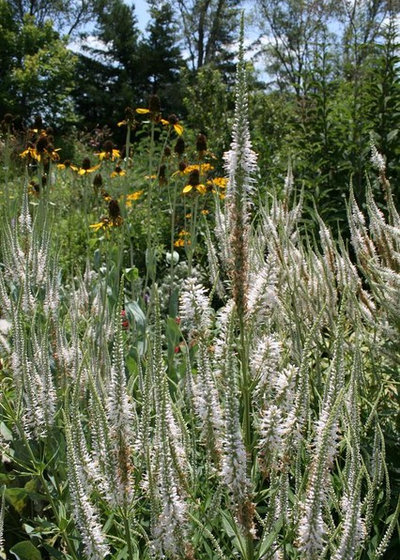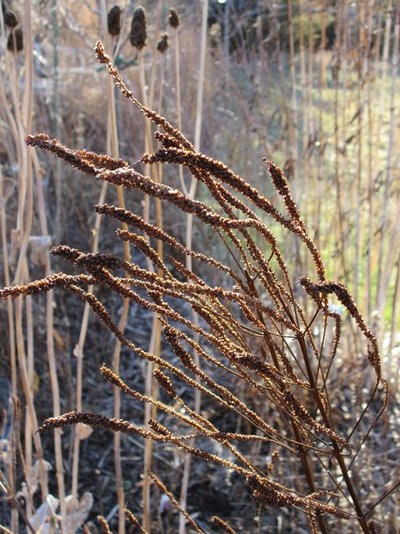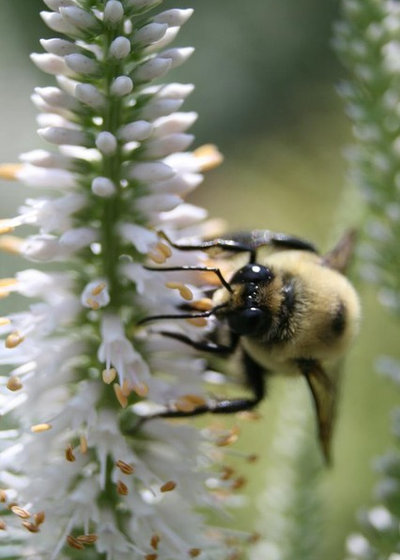I first started using Culver's root for kicks — I wanted something different. Thanks to its candelabra blooms adored by butterflies, good yellow fall color and carefree growing, I've come to adore this Midwest native and consider it a staple design plant. Leave it up through winter to give your garden a unique look; it also shelters winter birds and gives you seeds to sow easily at any time.

Benjamin Vogt / Monarch Gardens
Botanical name: Veronicastrum virginicumCommon name: Culver's root
Origin: Eastern Plains (Missouri River), northern Midwest and eastern Midwest into New England
USDA zones: 3 to 8 (find your zone)
Water requirement: Wet to medium-wet soil
Light requirement: Full sun
Mature size: Slowly spreading clump to several feet wide; 4 to 5 feet tall
Benefits: Insect magnet; unique spiked shape
Seasonal interest: Long blooming in midsummer; looks architectural in winter
When to plant: Spring to fall

Benjamin Vogt / Monarch Gardens
Distinguishing traits. It's a spooky plant in fall and winter. Culver's root is sometimes pecked at by birds on snowy afternoons and holds up great to strong plains winds.
As the story goes, an early American doctor found laxative properties in the plant. Do with that information what you will, but now you know why it's called Culver's root and not Poopy Pants root.

Benjamin Vogt / Monarch Gardens
How to use it. Culver's root is perfect for a rain garden or any low area in your landscape. Place it in the back of a bed or in the middle for a sculptural effect.
Planting notes. Butterflies, moths and bees swarm to blooms that look great during full moons. This really is an easy, interesting and well-behaved Midwest native one that everyone should try. Dig it in any time, from early spring to late fall — even in winter if you put several inches of mulch on top. Scatter the seeds over bare soil in spring and you should get seedlings, too.
More about attracting birds and butterflies





